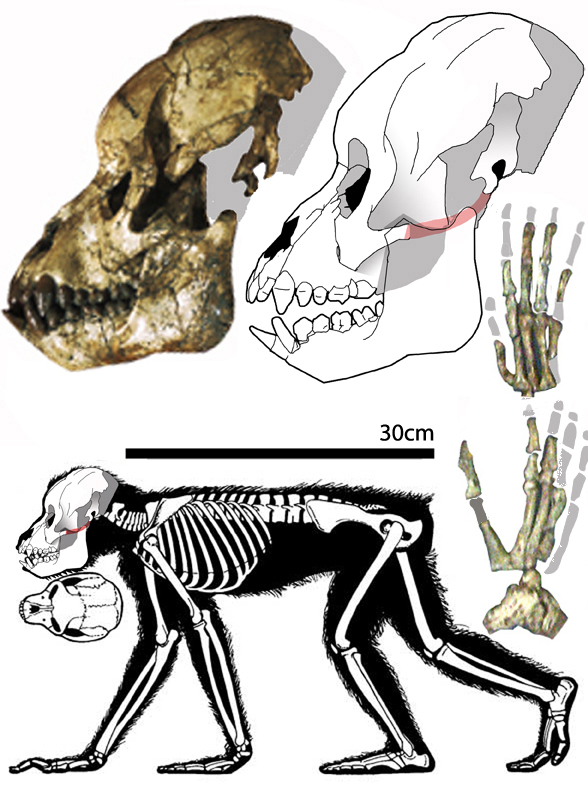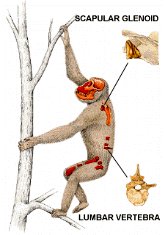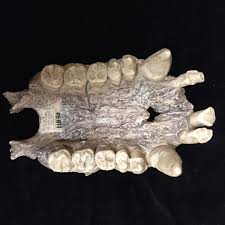
The Miocene (23 to 5 mya) was overall warmer and wetter than our present global climate, but temperatures declined throughout the epoch. Africa collided with Eurasia, enabling the spread of plants and animals. Tropical forests formed a continuous belt from Africa through Eurasia, allowing newly evolved apes to proliferate and diversify. Nearly 30 genera and over 100 species of apes with varied diets, sizes, and anatomy emerged in the Miocene. Miocene apes had a mosaic (combination) of ape and monkey characteristics, making it difficult to sort fossil species and modern primates.
Proconsul is a well known genus from the early-middle Miocene (20 – 18 mya) in East Africa. Like apes it has no tail, but unlike apes its fore and hind-limbs are the same length and its shoulders and arms are not adapted for suspension.

Morotopithecus existed at roughly the same time and place. It had much longer forelimbs that were adapted for suspension and vertical climbing. Morotopithecus is believed to represent the earliest fossil find we have locomotion patterns similar to contemporary, living apes, and even perhaps hint at the earliest instance of partial bipedality. Unfortunately, the fossil record of Morotopithecus is quite fragmentary, limiting the possibilities of comparative analyses.

Examine the following specimens to make the following comparisons (Proconsul, Morotopithecus, Chimpanzee, Gorilla, Old World Monkey,).

